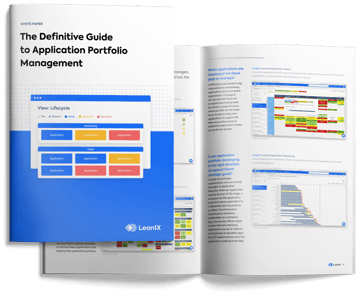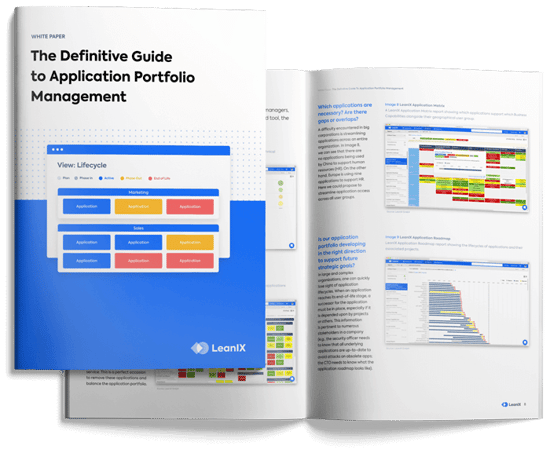Why implement software asset management?
With software playing such a central role in the day-to-day functions and growth of any modern organization, SAM has many benefits to help companies achieve strategic goals and keep their software running smoothly.
With software asset management your organization can:
- Reduce costs
- Ensure compliance
- Improve employee productivity
- Increase IT efficiency
- Establish vendor lifecycle policies
Software asset management is a big undertaking for any organization, but without it, businesses could find themselves wading through difficult compliance issues and hugely wasteful software spending.
Next, here are the software asset management best practices that you can use during the implementation or after you already started the SAM program.
SAM best practices
When planning and implementing a software asset management strategy, SAM best practices will form a framework for tackling what may seem like a daunting task.
SAM tools will help management evaluate their software landscape, implement software new solutions where needed, and manage the various licenses associated with software purchasing.
1. Assess your SAM maturity level
The first step of any SAM venture is to assess your software asset management maturity level. This means determining where you already are in the process and mapping out a plan for where you wish to end up. Most organizations take months or years to achieve complete SAM maturity, and there are many tools to determine which stage a business is at.
For assessing SaaS maturity levels, EA maturity assessment can predict where a business already is. There are five stages to SAM maturity:
- Risk drive: This is essentially the most disorganized maturity level of SAM. In this stage, businesses will just need to figure out what software they already have and document assets. This stage represents the bare minimum.
- Core drive: The next stage is where businesses gain a sense of their software profile and are able to determine what licenses they have compared to what is in their system. They still do not have a huge amount of control over which IT assets are being used but are able to start the process.
- Cost drive: During this stage of a SAM maturity assessment, businesses should be tracking assets and be able to analyze trends. Data is visible and organizations are fully software-compliant, so they are able to easily pass external audits should they occur.
- Value drive: Businesses in this stage should be leveraging tools, procedures, and policies to automate processes and manage the software asset life cycle. This is the point where organizations can begin to work on adding value to their SAM strategy.
- Transformation drive: Organizations in the transformation drive have reached full SAM maturity. During this stage, businesses can comfortably reinvest funds back into their software environment and collect enough accurate information to manage assets efficiently.
2. Determine your core process
Several core processes form the DNA of software asset management. The previous step, SAM maturity assessment will help you pick the core processes your SAM project needs to be built around. It is best to pick the most important one for your organization, around which you can build a stakeholder buy-in and a team in the next step.
- Software usage: This process/policy outlines what users are allowed to do with any installed software.
- Software purchasing: This process assists companies in software procurement.
- Software implementation: SAM processes assist in the correct deployment and approval of new software requests.
- Employee movement: Software needs to be tracked and managed so it’s reallocated and used efficiently.
- Disaster recovery: Maintain critical IT and software services until the disaster is resolved.
- Recycling: When employees leave a company, software recycling ensures that the redistribution of software assets is done efficiently, follows the right methods, and doesn’t incur any hidden costs or fees.
- License compliance: Uphold license compliance so you can pass software audits and ensure any issues are addressed efficiently.
3. Build stakeholder buy-in and a team
Engaging stakeholders in the SAM process is key to its success. Software asset management is not something that can be done without commitment because it involves hiring dedicated SAM personnel to guide the process and see it through to full maturity.
Establishing stakeholders' buy-in can be done by describing the benefits SAM brings to a modern organization; cost savings, lowering risks associated with complex software licenses, and optimization of assets.
Building a SAM team is the next step. Companies can either opt to hire a full in-house Software Asset Management team or third-party software license consultants.
While an in-house team is more expensive in the long run, they will share company values and goals, and it means that SAM can become an integrated and ongoing process that will adapt as a business grows.
There is also the hybrid option, which will match full-time personnel with expertise from the outside.
4. Evaluate and implement the SAM solution
The evaluations completed in the first two steps of the SAM implementation process will help organizations decide what SAM solution is best for their needs.
There are several factors to consider when choosing the right tool. Businesses will want to assess the size of their company, and whether the company infrastructure is strong enough to support their chosen solution.
SAM teams will also want to make sure they are choosing the right tool for what’s needed; whether that’s data gathering or license management. It’s important organizations use solutions that establish a positive ROI for their goals.
5. Discover all software assets
This phase serves as the basis for all core processes within SAM. Software discovery including SaaS discovery and shadow IT discovery is vital to understand and document before you can move into the following steps of the SAM process.
SAM tools that specify on SaaS can do this automatically; such as LeanIX’s EA which will add visibility into your SaaS estate, increase SaaS ROI and remove security gaps and ensure compliance.
6. Categorize software licenses and analyze usage
As previously discussed, one of the biggest reasons to implement software asset management is to demystify software licenses and analyze where software is being used (and how often). This step will establish that.
Software management tools are designed to organize licenses based on department and find areas of underused software.
Software usage is analyzed through usage trend data which will then enable informed decision-making about renewals and future investments.
7. Recycle and optimize software licenses
SAM managers can then use the usage and license data gathered in the previous step to determine whether an organization is receiving value from SaaS and software investments.
From here organizations can learn how to optimize software spend and decide how they wish to recycle, relocate and optimize licenses to get the best ROI from these agreements.
The process will remove or right-size unused or forgotten SaaS apps and licenses.
8. Implement software procurement policies
Now organizations are ready to implement software procurement policies. Through completion of the previous steps, SAM teams will be able to pinpoint where policies are needed and who will need to be involved.
Examples of policies that can be implemented during this stage are vendor life cycle management policies and SaaS renewal strategy; both of these will establish clear guidelines for vendor-client relations and help automate renewals and updates.
Once these policies have been established, organizations are able to focus on the biggest benefits of their SAM strategy; transformation and value.
Procurement policies allow businesses to understand when a solution isn’t working anymore and decreases the threat of costly audits and overspending on unused software.
9. Create and forecast software budget
Lastly, each step in a software management asset strategy will help companies forecast and establish software budgets as their business evolves.
Money wasted on unused SaaS software is a big problem for a lot of organizations, so once a comprehensive SAM process has been established, areas of improvement in usage and spend history will become apparent.
This will allow for more accurate forecasting of software budgets and how to make SaaS software solutions more cost-effective.
Conclusion
The most important step when running your SAM program is to pick the software or SaaS management platform that fits your business strategy and enables you to achieve your overall business goals.
While some focus only on specific use cases, some can also map software assets to your business capabilities using application portfolio management practice.

